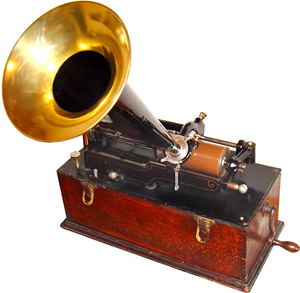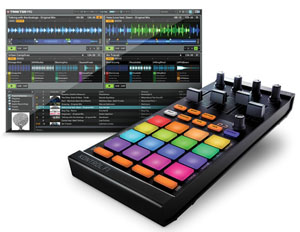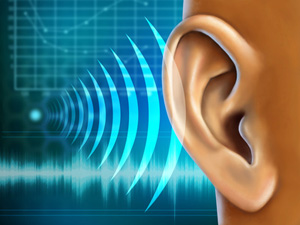 A recording made in St. Louis in 1878 has recently been digitized so we could hear it without damaging the original medium. It is the oldest “playable” American voice recording. Speaking of audio recording medium, this voice and cornet were recorded on a piece of tin foil using the Edison phonograph. And you think YOU have it hard;).
A recording made in St. Louis in 1878 has recently been digitized so we could hear it without damaging the original medium. It is the oldest “playable” American voice recording. Speaking of audio recording medium, this voice and cornet were recorded on a piece of tin foil using the Edison phonograph. And you think YOU have it hard;).
Researchers mapped the groove’s (it was just one long groove) contours and fed the information into a computer, which converted it to audio to make it audible in the same basic way it would have been done in 1878. It’s really amazing.
Take a listen to it in this video below:
And you can see the original article from The Telegraph here: http://www.telegraph.co.uk/news/newstopics/howaboutthat/9632924/Voice-recording-from-1878-played-again.html
Archives for October 2012
Tips For Getting A Distorted Radio Voice Effect
You have heard it in tons of recordings – that vocal that sounds like it’s coming through a radio, all thin and kinda distorted. Here is a video that shows you how to do that in Pro Tools. Though you can do this – or something very close to it – in any recording software using EQ (equalization). Essentially it involves removing most of the frequencies in both the high and low areas, leaving only a narrow band in the middle frequencies, which is what telephone and radio voices sound like to us.
See the video below for how to do it in Pro Tools:
Neil Young And The Pono Player
Neil Young (of Crosby, Stills, Nash, and Young fame) is on a crusade for better audio quality in our music. Specifically he laments the poor sound quality of internet digital audio files like MP3, AAC, etc., which are “lossy” formats. That means that they have been data-compressed in order to make them usable for both internet streaming /download, AND the ability to store thousands of songs on your iPod/iPhone. But these lossy audio formats are, by necessity, not high-quality audio (like their sopurce wav files) because a lot of the data has been removed to make the files smaller (usually about a tenth the size of the original wav version).
Since Neil Young comes from the age of the vinyl record, which was analog audio and technically capable of much more accurate audio, he is worried that an entire generation of folks won’t know what good quality audio is since they do most of their music listening via an iPod, or other portable music device.
So Neil is pushing something called the Pono Player, which uses a much higher quality audio file for music. Personally, I don’t think very many people could tell the difference between the wav version and the mp3 version these days (I know – heresy!), but anyway…
Here is an article about good ole Neil and his Pono Player: http://productionadvice.co.uk/neil-young-pono-pony/
Native Instruments Traktor Pro 2.5 and Kontrol F1 For DJs

For the DJs out there, or folks interested in getting into the DJ world, you might be interested to know about Traktor Pro 2.5, Native Instruments’ update to the awesome Traktor DJ software that lets you mix multiple decks, do remixes, loops, etc. The Traktor Kontrol F1 is a hardware controller that works with Traktor – giving you lightening fast and control over Traktor 2.5.
In this package, Traktor 2.5 Pro comes with the the Traktor Kontrol F1 in one package for $249 (and free shipping from B&H!).
Below is a video that talks about the update and also provides an overview and tutorial.
To Dither Or Not To Dither?
 Dither is a type of low-level noise that is typically added to digital audio when reducing the bit-depth – going from 24 to 16-bit for example. Basically, dither is a random form of noise that gets applied because in digital audio conversions, you end up with non-random noise, which is more noticeable due to the patterns created. It’s sort of like the difference between the noise of a leaky faucet (drip, drip, drip…), or snoring, both of which have a pattern, and white-noise, which is random. White noise is actually rather soothing and is used to mask other types of noise. I even have a pair of white-noise ear plugs I use when sleeping, traveling, waiting in waiting rooms, etc. to block out all the non-random noise. Well in a way, that is sort of what dither does.
Dither is a type of low-level noise that is typically added to digital audio when reducing the bit-depth – going from 24 to 16-bit for example. Basically, dither is a random form of noise that gets applied because in digital audio conversions, you end up with non-random noise, which is more noticeable due to the patterns created. It’s sort of like the difference between the noise of a leaky faucet (drip, drip, drip…), or snoring, both of which have a pattern, and white-noise, which is random. White noise is actually rather soothing and is used to mask other types of noise. I even have a pair of white-noise ear plugs I use when sleeping, traveling, waiting in waiting rooms, etc. to block out all the non-random noise. Well in a way, that is sort of what dither does.
Anyway, here are two articles. One is in favor of always dithering (in the audio sense described above – not in the “being indecisive” way:)). The other is not saying it is bad to dither, but makes a case that for most kinds of pop music, it doesn’t make much noticeable difference.
The first dither article, championing the necessity of dither is here: http://productionadvice.co.uk/dither-or-distort/
And the article, suggesting that, in pop music at least, dither may not be necessary, is here: http://www.ethanwiner.com/dither.html
In the end, you’ll have to try things out, listen, and decide for yourself.
Cheers!
Ken